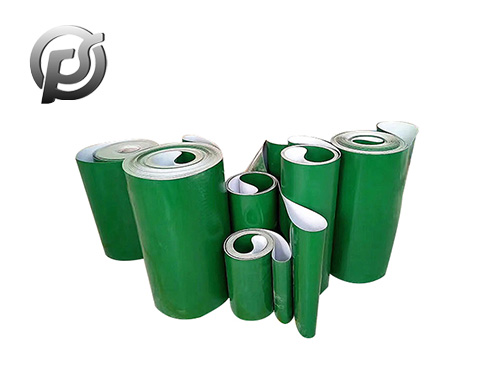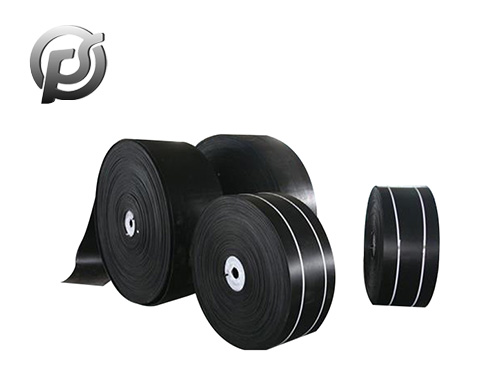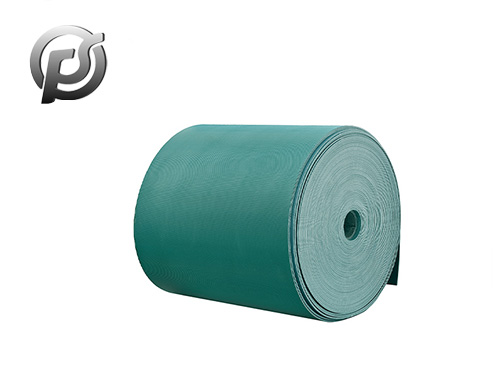Belt conveyor (that is, belt conveyor) is the most ideal efficient continuous transportation equipment in coal mine. Compared with other transportation equipment (such as locomotive), it has the advantages of long transportation distance, large volume and continuous transportation, and reliable operation, easy to realize automation and centralized control. The belt conveyor is the main part of the process equipment, and the roller is the main part of the belt conveyor to transmit power, but also the fault prone part. Therefore, it is very necessary to master certain knowledge of belt conveyor drum.
The function of the driving drum is to transfer the torque provided by the driving device to the conveyor belt. The reversing drum includes a guide drum for reversing the conveyor belt at the end of the conveyor, a guide drum for increasing the covering Angle of the driving drum, a tightening drum and a guide drum for tightening the device. The drum group is composed of a drum shaft, a bearing seat, a hub, a spoke plate and a shell. Some drums also have hub and drum shaft connection, hub and spoke plate connection. Generally, the driving drum's surface is covered with rubber or ceramic to increase the coefficient of friction between the driving drum and the conveyor belt.
Type of belt conveyor drum
According to different classification basis, the types of belt conveyor drums are also different:
1. Driving mode
(1) External drive, that is, the driving device is placed outside the driving drum, and the reducer is directly connected with the input shaft of the driving drum.
(2) internal drive, that is, the driving device is placed in the driving drum, which is also known as the electric drum. If only the reducer is installed in the barrel, called the gear drum, or external deceleration drum, suitable for high-power belt conveyor.
2. Bearing inner hole size and load
(1) Light, aperture in 50~100MM. The structure of the lightweight drum is interference fit between the shaft and the hub, and the spoke plate is fully welded with the shell. The interference connecting key structure between the hub and the shaft is used to drive the drum.
(2) Medium size, aperture in 120~180MM. The structure of the medium drum is that the shaft and the hub are connected with the ring lock, and the spoke plate is fully welded with the shell.
(3) Heavy duty, aperture in 200~220MM. The structure of the heavy roller is the hub and shaft are connected with the ring lock, and the spoke plate is cast and welded with the shell. The roller of this structure is a part of the shell, spoke plate, hub cast into one chassis and another part of the shell welded.
(4) Engineering roller. Engineering roller refers to a roller specially designed to meet the load conditions of a special conveyor roller. Due to the characteristics of high strength and low elongation, the standard of these rollers is much higher than that of the steel rollers used in the general fiber fabric core conveyor belt. Starting, braking and other power loads are transferred directly to the drum. When high tension is involved, the concentricity of the drum and the accurate alignment between the drum and the conveyor are very important. It is especially emphasized that the roller structure support must be accurately aligned to prevent the load concentration and due to misalignment caused by the roller overload.
3. Shape
(1) The drum is made of steel plate and welded. The diameter of the middle part of the drum is about a few millimeters larger than the diameter of the two sides of the drum, so as to prevent the conveyor belt from deviating.
(2) Vane drum, the drum is composed of many transverse blades, the purpose is to facilitate the cleaning of the conveyor belt, this kind of drum is also called the self-cleaning drum. If the blade is changed to a round steel rod, it is called a rod roller. Naturally, the horizontal groove can also be opened on the cylindrical steel shell, which can also play the role of self-cleaning. Such rollers are called grille rollers.
(3) Grooved rubber surface roller, the roller cover with diamond, herringbone, straight line, ring, trapezoidal groove, respectively called diamond surface, herringbone and other surface shape of the roller, its purpose is to increase the friction coefficient and facilitate the discharge of sticky materials. Diamond shape and herringbone shape are often used to cover the driving drum.
4. Working function
(1) Vacuum roller: In order to increase the friction between the conveyor belt and the roller, the roller is equipped with a vacuum pump or an external vacuum pump to create a vacuum between the conveyor belt and the roller covering Angle and increase the friction force. But the vacuum drum has not been popularized because of its complex structure.
(2) Magnetic roller, which is equipped with magnets. For example, the lower part of the conveyor belt is covered with magnetic glue, which can increase the friction force according to the attraction effect of opposites. When an ordinary conveyor belt is used, the magnetic drum becomes the iron removal drum.
(3) The tire drum, the outside of the drum is made of many ceramic pieces, on the one hand, it can increase the friction force, on the other hand, it is easy to clean. Ceramic plates can also be made into insert plates for easy replacement.
Choose the roller to consider factors
The diameter of the driving drum of belt conveyor accessories directly affects the additional bending stress and the specific pressure of the conveyor belt on the drum. In order to get a reasonable driving drum diameter, the following four aspects should be considered.
1. In order to avoid excessive additional bending stress caused by the conveyor belt passing through the drum, the drum used by the wire rope core conveyor belt is generally selected as the ratio between the drum diameter and the wire rope diameter is greater than 150. The roller radius of the plastic conveyor belt with the BGF core is the same as that of the canvas conveyor belt with the same strength.
2. In order to reduce the surface specific pressure of the conveyor belt and avoid the rubber covering of the conveyor belt falling off, the driving drum should meet the requirements of the fabric core belt and steel rope core belt.
3. When the bending frequency of the conveyor belt is relatively high, the diameter of the drum should be correspondingly larger, so as to reduce the bending stress of the conveyor belt and compensate for the resulting reduction of bending fatigue life.
4. In addition, in order to automatically align the conveyor belt around the drum, the surface of the drum can be made into a waist drum shape, and the middle part is 8mm larger than the smallest diameter at both ends.
 Optimizing Operations with PE Conveyor Belts: Durability, Efficiency, and Versatility
Optimizing Operations with PE Conveyor Belts: Durability, Efficiency, and Versatility
 Exploring the Efficiency and Versatility of Light Conveyor Belts
Exploring the Efficiency and Versatility of Light Conveyor Belts
 Polyester Conveyor Belts: Enhancing Efficiency and Reliability in Material Handling
Polyester Conveyor Belts: Enhancing Efficiency and Reliability in Material Handling